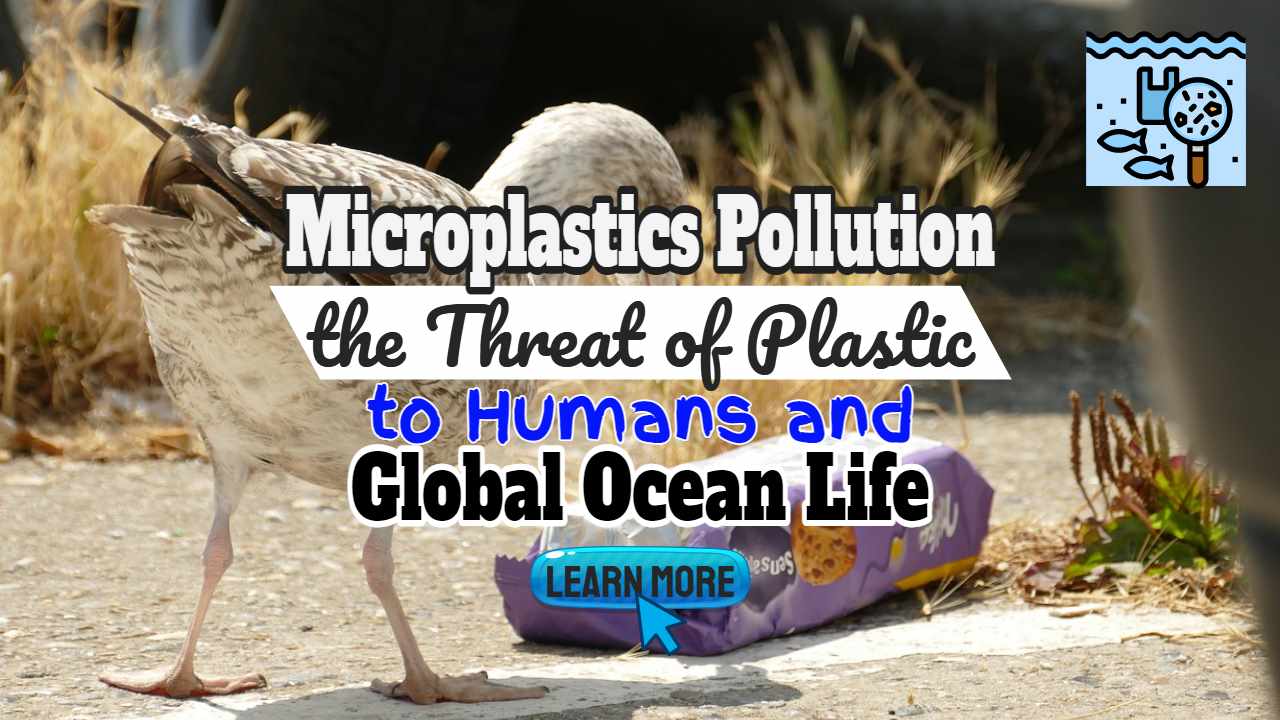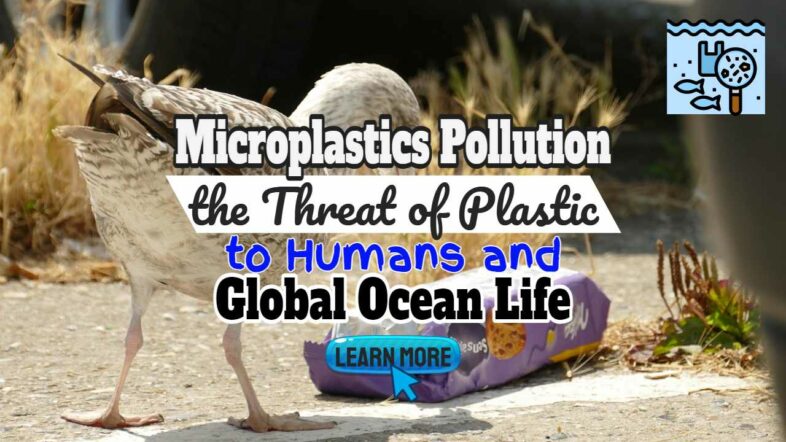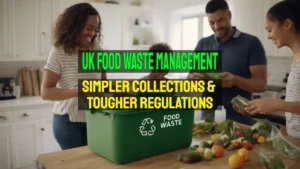In this article, you will find out about microplastics pollution the threat of plastic which now exists to humans and global ocean life.
On This Page:
- What is Microplastics Pollution?
- Where Microplastics can be found
- Nanoplastics
- Plastics
- Primary and secondary microplastics
- Breaking the Plastic Wave
- Confronting Ocean Plastic Pollution
- Microplastic Pollution in Deep-Sea Sediments From the Great Australian Bight
- Prevention of Microplastic Contamination During Laboratory Analysis
- Microplastic Fragments in Deep-Sea Sediments
- Microplastics are everywhere — but are they harmful?
- Microplastics revealed in the placentas of unborn babies
- Why Care About Microplastics?
- Microplastics Pollution Data
- Other Words for Microplastic
- First Known Use of microplastic
- Learn More About microplastic
- The first known use of microplastic was in 1990
- Primary microplastics in the oceans
- Microplastics are linked to infertility, cancer, immune diseases and other serious health problems
- How can you reduce your microplastic intake?
- How can we eat and drink fewer microplastics?
What is Microplastic Pollution?
Microplastics are tiny bits of plastic smaller than 5mm in length that are damaging to the water and aquatic life — and may even be toxic to people. Microplastics research is still in its infancy; little is known about them or their effects – but we do know they have an effect on the ecosystem.
However, when the members of the British Antarctic Survey recently examined Weddle Sea samples in a laboratory, they discovered that a significant portion originated from flakes of paint from their own vessel.
Where Microplastics Pollution can be found
What is nearly non-biodegradable yet is devoured by all aquatic life? Microplastics.
Scientists scouring the Mediterranean bottom west of Italy discovered accumulations of microplastics in unprecedented quantities, even in deep-sea trenches. A single square metre (10. 8 square feet) of space was capable of containing a thin coating.
Microplastics pollution also has an effect on human health. According to studies, we consume about 5 grammes of plastic every week, which is roughly the size of a credit card. On a bigger scale, National Geographic says that we inadvertently absorb between 39,000 and 52,000 plastic particles every day through our drinking water and food; the amount is significantly higher when microplastics are included.
Although several firms have committed to decreasing microbead manufacturing, there are still a number of bioplastic microbeads that have a lengthy breakdown life equivalent to that of conventional plastic. Microplastics are derived from secondary sources. Diameter: 6 micrometres (0.3105 inches). The widespread presence of microplastics with irregular forms indicates that fragmentation is a significant source. Other sources:
- as a by-product of wear and
- tear/dust emission.

Nanoplastics
Nanoplastics have a diameter of less than 1 m (1000 nm) or less than 100 nm, depending on the definition employed. Nanoplastics in the environment has been speculated to represent anything from a transitory result of microplastics pollution fragmentation to an undetectable environmental concern at potentially high and continually increasing concentrations.
In the field, how can you identify nanoplastics? Ter Halle came up with the concept after examining the surfaces of two deteriorated plastic containers she gathered during the journey. She discovered that the top few hundred micrometres had turned crystalline and brittle; she believes that this is also true for the nanoplastics that most likely broke off from these surfaces.
The significance of microplastic particles as vectors for the long-range transmission of chemical pollutants may be their greatest danger of environmental harm.
Plastics
The Guardian posted a story on the SFEI's microplastics pollution study, expanding the report's reach even further. “It was practically everywhere we looked,” Maanvi Singh of the Guardian's US edition said, quoting an environmental scientist at the San Francisco Estuary Institute.
The Mediterranean Sea is one of the most contaminated waters on the planet, accounting for 7% of all microplastics. Additionally, there are five marine zones (referred to as gyres) where currents funnel the most trash.
However, it was an accidental finding on a nearby beach that inspired one inventor to devise a novel method for removing these microscopic, ubiquitous plastics from the waters.
You can help minimise microplastic production and use by reducing your reliance on plastic in daily life.
For instance, drink tap water rather than water packaged in plastic bottles. Choose fresh foods over manufactured foods covered in plastic.
Primary and secondary microplastics pollution
They are divided into two categories: primary and secondary microplastics pollution. Primary microplastics are those that have been created expressly for commercial usage. Nurdles, for example, are little pellets that are mixed, melted, and moulded into larger plastic shapes.
As the name implies, these are incredibly minute bits of plastic. They are officially defined as plastics with a diameter of fewer than five millimetres (0. 2 inches), which is less than the diameter of a traditional pearl used in jewellery. There are two categories of it: primary and secondary. Primary microplastics are microscopic particles designed for commercial use, such as cosmetics, or microfibers shed off clothing and other fabrics, such as fishing nets. Secondary microplastics are particles formed during the decomposition of larger plastic items, such as water bottles. Straws and other single-use plastics are the primary sources of secondary plastics in the environment.
Microplastics are released directly into the environment as small plastic particles from primary sources. These are intentionally manufactured particles, such as those found in a range of consumer and industrial products. In cosmetics, microplastics have been used as abrasives. Secondary microplastics pollution is generated when large plastic waste, such as plastic bags and bottles, dissolves in our environment into microscopic plastic particles.
Breaking the Plastic Wave
Ocean plastic pollution is a huge global problem. The Pew Charitable Trusts' new research, “stopping the plastic wave,” and accompanying Journal of Science article provide the results of a comprehensive modelling effort to understand how plastic manufacturing, use, and disposal contribute to this problem.
Microplastics from the water may be released into the atmosphere through a bubble-burst ejection mechanism. Micro and nanoparticles are released into the water during this process as trapped air bubbles rise to the surface and rupture.
“breaking the plastic wave” revealed that there are some simple solutions to the microplastics pollution problem, such as replacing microbeads in personal care products with natural materials such as nutshells. Genuine systemic change is necessary for the remaining three factors. That is, a paradigm shift in the production, usage, and disposal of plastic—including microplastic—will be required.
Confronting Ocean Plastic Pollution
There is a plethora of knowledge about the oceans as a source of microplastic pollution at the moment, which has caused a backlash against plastics, but we are still learning that we cannot avoid it since it is also in the air.
On the other hand, microplastics are not biodegradable. As a result, primary and secondary microplastics accumulate in the environment and persist. Microplastics pollution has been found in a variety of settings, including marine and freshwater ecosystems. In the early twenty-first century, annual plastic pollution in the seas from all types of plastics was predicted to reach between 4 million and 14 million tonnes.
On the other hand, the health impacts on people are unclear because it is uncertain how long microplastics remain in the body before being excreted. Microplastic pollution has contaminated the whole planet, from the summit of Mount Everest to the depths of the seas.
Microplastic Pollution in Deep-Sea Sediments From the Great Australian Bight
While the total amount of microplastic contamination in deep-sea sediments is unknown, this knowledge is crucial for anticipating the distribution and potential implications of global plastic pollution.
Microplastics are microscopic plastic particles with a diameter of lower than five millimetres that have been discovered to represent substantial harm to marine and aquatic life. Thus, scientists used a modified density separation and dye fluorescence technique to analyse microplastics pollution in deep-sea sediments from the Great Australian Bight in order to close the information gap for such tiny objects.
Sci Total Environ 717:134625. Https://doi. Org/10. 1016/j. Scitotenv. 2019. 134625. Article PubMed Google Scholar. Barrett J, Chase Z, Zhang j, Holl MMB, Willis K, Williams A, Hardesty BD, Wilcox C (2020) microplastic pollution in deep-sea sediments from the great Australian bight.
Prevention of Microplastic Contamination During Laboratory Analysis
The materials analysis unit of the Philadelphia Water Department's principal responsibility is to conduct quality control testing on water treatment chemicals and materials used by the City of Philadelphia. The lab has been improving its capabilities in areas such as water pollution caused by microplastics pollution.
Microplastic Fragments in Deep-Sea Sediments
Between 28 and 800 microplastics per litre were found in the sediments. Notable is the discovery of just fibres. Similarly, fibres were discovered as the most prevalent kind of microplastic in sediments from the Kuril-Kamchatka trench (northwest Pacific) at depths of 4869–5766 m. Additionally, paint chips and paint particles were recorded.
Otherwise, microplastic pieces found in coastal sediments are frequently higher in polyethylene and polypropylene, two low-density polymers typically employed in single-use plastics. Denser polymers, on the other hand (e.g. polyester, polyamide, and acrylic), are typically found in abundance in intertidal and subtidal sediments, as well as in places with infrequent polystyrene intrusions (Erni-Casasola et al).
Microplastics are everywhere — but are they harmful?
While little is known about the harmful effects of microplastics pollution on humans, some research indicates that microplastic exposure has a detrimental effect on health. When humans come into contact with microplastics, whether by ingestion, inhalation, or skin contact, some evidence indicates that some level of toxicity occurs.
According to a study undertaken by specialists at the hull york medical school and the university of hull, excessive amounts of microplastics consumed may have a detrimental effect on the human body. While it is well accepted that they are detrimental to the water and aquatic life, their effect on people remains largely unknown.
Additionally, we are concerned about the potential release of plastic additives like bisphenol-a and contaminants like PCBs and PAHs that are linked to microplastics. These additives and contaminants are also being researched and analysed due to the likelihood that they are hazardous.
Microplastics revealed in the placentas of unborn babies
Microplastic particles were identified for the first time in the placentas of newborn foetuses, which the researchers termed as “a cause for worry.”
At the time, the health impacts of microplastics on the body remain unknown. In October, scientists established that newborns fed formula milk in plastic bottles absorb millions of particles daily.
In 2019, researchers detected particles of air pollution on the foetal side of the placenta, indicating that unborn infants are also exposed to contaminated air caused by motor vehicles and fossil fuel burning.
Why Care About Microplastics?
There have been some encouraging signs, but there is still a long way to go. Numerous countries have implemented legislation prohibiting the use of microplastics in personal care products in the near future, but as we have learned, this only tackles a piece of the problem.
Additionally, they analysed the first faeces of three infants. They did so by scraping samples from diapers with spatulas, being careful not to come into contact with the diaper to avoid counting microplastics that may have originated from the diaper rather than the child.
While environmental activity is the primary source of microplastics pollution, purposeful human manufacture of small beaded plastics is another major source.
These have found use in the cosmetics and hygiene sectors, where they are added to products like as shower gels and face scrubs to increase their abrasive characteristics and ensure appropriate exfoliation and washing.
Microplastics Pollution Data
According to their study, “Constraining the Air Leg of the Plastic Cycle,” the bulk of atmospheric microplastics in the western United States arises as a result of secondary re-emission. Between December 2017 and January 2019, researchers in the western United States collected data on air microplastics.
Microplastics are defined as plastic shreds with a length of less than 5 mm. The researchers identified enormous amounts of them in polar snow, claiming to be the first to do so.
Other Words for Microplastic
Environmental contamination is a result of synthetic garments. Microfibers are microplastics generated from textiles. Their shape. Perhaps you have never examined the label on your clothing. If that is the case. You will come across terminology such as “polyester” and “nylon.”
In other words, the term “microplastic” refers to a broad category of plastics that come in a range of shapes and sizes. They can have a wide range of effects on animals (including people), plants, and other species and their ecosystems.
While plastics will never completely dissolve, they will continue to degrade into smaller and smaller particles, resulting in secondary microplastics. In other words, they stay in the water indefinitely. While you may be aware of the products you use that contribute to secondary microplastics, many of us are ignorant of the primary microplastics we use on a daily basis.
First Known Use of Microplastic
Microplastics and their impacts are a relatively new area of study, and little is known about them at the time. NOAA's marine debris programme is leading efforts to do research on this topic. Standardized field protocols for collecting silt, sand, and microplastics pollution in surface water have been created and are now being evaluated.
Eventually, field and laboratory approaches will enable global comparisons of microplastics released into the environment, paving the way for determining the debris's final distribution, effect, and fate.
Microplastics are formed in a variety of ways, one of which is when larger plastic garbage breaks into increasingly microscopic particles. Additionally, microbeads, a type of microplastic, are extremely small pieces of synthetic polyethylene plastic that are used as exfoliants in a variety of health and cosmetic products, including various cleansers and toothpaste.
Carnival season, glamour, and a microplastics primer Following yesterday night's Mardi Gras festivities, a front end loader clears trash from Boubon Street. What do carnival season and microplastics pollution have in common? Lots!
Whether you're a crushed mardi gras bead or a particle of glitter, you're almost certain to wind up in New Orleans' water system. To mark the season, PC's water quality department has prepared an in-depth description of microplastics and how they may be eliminated.
Learn More About microplastic
To learn more, check this page. In 2018, the estuary lab discovered an average quantity of 830,762 microplastics per km2 in the 400-acre estuarine refuge within Hudson river park. According to this assessment, the concentration of it discovered in the estuarine refuge has grown by almost sixfold since 2017.
As part of my PhD studies at UNC-Wilmington, we discovered the extent to which microplastics may cause harm. In researching the effects of plastic pollution on larval fish (inland Silversides) and their zooplankton food. Scientists are concentrating their efforts on species that spend most of their time in estuaries, as estuaries are frequently one of the most extensively polluted marine ecosystems.
The first known use of microplastic was in 1990
To begin, despite their diminutive name, microplastics are a significant issue. This is because these microscopic fragments of plastic waste may wound up almost everywhere. Indeed, we know microplastics pollution exists in our seas and environment, but it may also find their way into the food and beverages we consume.
And, because this is a relatively recent condition, we lack long-term studies on it. However, several outstanding scientists are conducting research on microplastics and their impact on the ecosystem. Their work has affected legislation and the development of novel approaches to the problem of plastic pollution.
After four years of collecting water samples, we are sure that our dataset is the most diversified and one of the biggest illuminating the amount of microplastic contamination globally. With this in hand, we've moved on to data analysis in order to get a better understanding of microplastic contamination and, more significantly, how our work may help bring about good change.
5 millimetres in length, are referred to as microplastics. Plankton, bivalves, fish, and even whales consume these particles, mistaking them for food. Microplastics were found in up to 800 species of fish, crabs, and molluscs, according to a 2016 research by the United Nations Food and Agriculture Organization (fao).
Primary microplastics in the oceans
Plastic has permeated daily life, and the negative consequences of plastics are becoming increasingly apparent: enormous amounts of plastic flow into rivers and seas, wreaking havoc on marine ecosystems and associated economic activity. This is the first analysis of its type to quantify primary microplastics leakage and to establish that these primary microplastics constitute a significant source of plastics in the seas globally.
According to the World Health Organization, microplastics in water originate mostly from two sources: surface run-off (e.g., during a rain event) and wastewater effluent. Microplastics make their way into our drinking water after evading wastewater treatment systems. They may easily penetrate water filtering systems and settle on seas due to their minuscule size.
“They've been discovered practically wherever we check,” Anastas explains. Microplastics, both primary and secondary, have been discovered in seas, lakes, rivers, soil, air, and, sadly, our food. “There is a growing body of studies indicating precisely how pervasive they are,” Shemitz says.
Microplastics pollution is linked to infertility, cancer, immune diseases and other serious health problems
Yes, it is significant. Microplastics in toothpaste pose a threat to both the environment and human health. Certain chemicals found in plastics have been related to cancer, birth deformities, immune system difficulties, and developmental problems in children.
It is impossible to assess the particular effects of the plastics we consume and breathe on consumers, as we are continually exposed to microplastics in everything from bottled and tap water to clothes.
Additionally, experts know very little about the toxicity levels that are harmful to people, as well as how food chain activities may alter plastics' toxicity.
How can you reduce your microplastic intake?
While it is undeniable that large-scale change and improvements are required to address our global plastic catastrophe effectively, there are still several small adjustments we can do. When it comes to personal consumption, it makes sense to begin by limiting your exposure to the main microplastic causes.
One significant issue is that microplastics can be the same size and form as food consumed by marine creatures. They are frequently mistaken for food, causing abrasions to animals' digestive systems, lowering the quality of their nutritional intake, and clogging their bellies with plastic rather than food.
This suggests that the beer brewing process may have contributed to microplastic contamination. As with the beer samples, all twelve brands of sea salt were found to contain microplastics.
There is no escaping the need to act to reduce plastic waste produced during plastic depackaging and separation during the processing of waste plastic for recycling. The waste recycling industry needs to use depackaging equipment that avoids creating microplastics.
The study closes with a general worry about microplastic pollution in tap water since although beer and salt consumption may be adjusted or reduced, water is a daily requirement that is used in all forms of hydration.
How can we eat and drink fewer microplastics?
We're delighted to do so. Why? Because we see a society in which no child ever needs to question their mother, “Mom, what are microplastics?” And we want a world in which the same child, and every child on the planet, may drink clean water and breathe clean, plastic-free air.
Wastewater and drinking-water treatment plants are quite effective in removing microplastics pollution. Although studies are limited, they have been shown to remove more than 90% of microplastics. However, there are several things that individuals may take to help minimise microplastics.
Worst of all, they are virtually ubiquitous. Microplastics have grown so pervasive in our environment, according to the European environmental bureau (EREB), that they are found in the air we breathe, the water we drink, the food we consume, and even deep into our organ's tissues.
Ramp Method of Waste Disposal – Landfill Guide & Techniques
The ramp method optimizes landfill operations by creating an inclined surface, allowing efficient waste compaction and daily cover application. Unlike traditional methods, it requires minimal excavation, reducing costs and extending landfill lifespan. Proper implementation and equipment maintenance are key to effective ramp method performance in various terrains…
The Future of UK Food Waste Management – Simpler Collections and Tougher Regulation
The future of UK food waste management will be a big push toward higher recycling rates through simpler collection and far greater consistency across the nations, helping citizens understand how to be green and recycle more organic waste. As the UK continues to advance its environmental goals, recently announced government policies aimed at simplifying waste […]
Cost of Commercial Waste Disposal UK: Keeping the Numbers Low: What UK Rubbish Really Costs
Managing rubbish costs money. UK companies know this too well, as they deal with heaps of trash every day. Every year, these businesses create 27.5 million tonnes of commercial waste and 13.6 million tonnes of industrial waste – that's a mountain weighing 41.1 million tonnes! Tossing all that waste can eat up to 4-5% of […]
Can You Take Plaster to the Tip? Guidelines and Restrictions for Disposing of Plaster and Plasterboard Waste
Plaster and plasterboard are common in building and fixing up homes. These materials can't just be thrown out like regular rubbish. Some recycling places take them, but you need to know the rules first. Plasterboard should not go to a landfill as it's against the law due to environmental concerns. Also, some dangers come with […]









